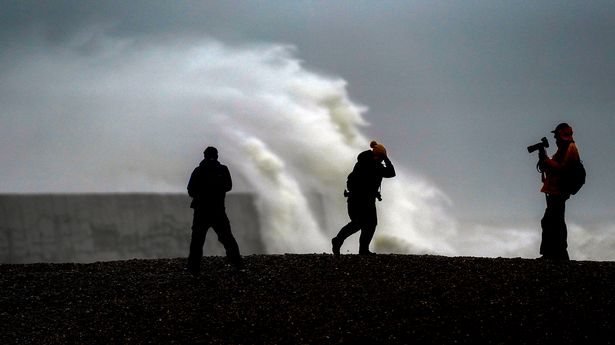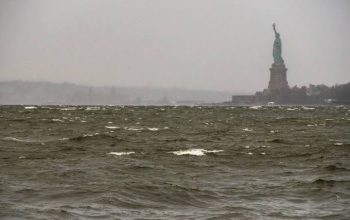The Met Office has issued a severe weather warning, alerting the public to a two-day period of extremely dangerous winds that could pose a serious risk to life. This comes as the UK braces for a powerful storm system expected to bring destructive gusts, heavy rainfall, and widespread disruptions. The warning, which covers large parts of the country, has prompted officials to urge residents in affected areas to take precautions and stay informed about rapidly changing weather conditions.
‘Danger to Life’ Warning Issued
The Met Office has categorized the storm with a rare “danger to life” warning, indicating the potential for significant harm to people and property. Winds are expected to reach speeds of up to 80 mph in some regions, with the possibility of even stronger gusts along the coast and in elevated areas. These hazardous conditions are likely to result in widespread damage to buildings, uprooted trees, and flying debris, which can pose serious risks to anyone caught outdoors.
In addition to the wind warning, heavy rainfall is forecast to accompany the storm, leading to the potential for localized flooding, particularly in low-lying areas and regions already saturated from recent rains.
Full List of Affected Areas
The Met Office has identified several regions that will be most impacted by the dangerous winds. The areas under the two-day warning include:
- South West England (Cornwall, Devon, Somerset)
- Wales (particularly coastal regions)
- The Midlands
- Northern Ireland
- Parts of North West England (Lancashire, Cumbria)
- Scotland (Western Isles, Highlands)
While these areas are expected to bear the brunt of the storm, other parts of the UK may also experience gusty winds and challenging weather conditions. Residents in affected regions are being urged to prepare for potential disruptions to travel, power outages, and damage to homes and infrastructure.
Authorities Urge Public to Take Precautions
With the storm approaching, authorities are warning the public to take immediate precautions. People in affected areas are advised to avoid non-essential travel during the peak of the storm, secure loose outdoor items that could become dangerous projectiles in high winds, and prepare for the possibility of power outages.
Emergency services are on high alert, ready to respond to incidents of fallen trees, damaged buildings, and accidents caused by flying debris. The public is being reminded to avoid coastal areas, where large waves and strong gusts could create life-threatening conditions.
The Met Office has also recommended that residents stay updated with the latest weather information, as forecasts may change as the storm progresses. “This is a serious weather event, and people need to take it seriously. We’re urging everyone in affected areas to follow safety advice and avoid taking unnecessary risks,” a Met Office spokesperson said.
Travel Disruptions Expected
In addition to posing a danger to life, the storm is expected to cause significant travel disruptions. Strong winds could lead to road closures, particularly on routes passing through wooded or exposed areas. Rail services may also face delays or cancellations, and ferry services in coastal regions are likely to be suspended.
Air travel may also be affected, with passengers being advised to check with airlines for updates on flight schedules. Disruptions to public transport are highly probable, and commuters are being urged to plan ahead and allow extra time for their journeys.
Looking Ahead
The severe wind warning is expected to remain in effect for 48 hours, with the storm likely to reach its peak intensity during the middle of the two-day period. While the worst of the weather is forecast for the UK’s western regions, residents across the country should remain vigilant and prepared for rapidly changing conditions.
The Met Office continues to monitor the storm closely, and further updates will be provided as the situation develops. For now, the priority is safety, and officials are urging everyone in affected areas to stay indoors as much as possible and avoid taking unnecessary risks.



